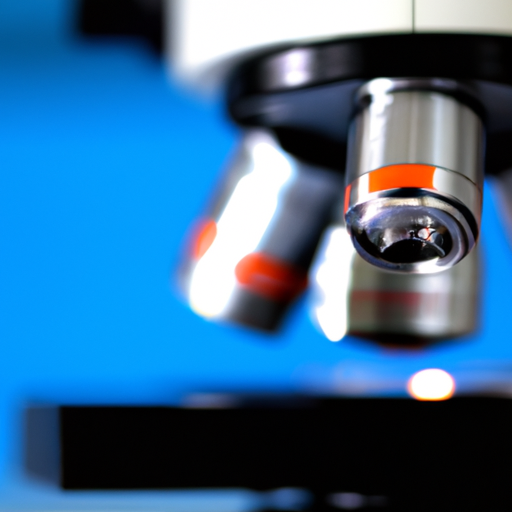Prepare to explore the intriguing realm of futuristic wearable tech, where technology and fashion seamlessly blend to revolutionize our everyday experiences. This rapidly-evolving field has brought us beyond merely tracking fitness stats into creating devices that adapt to our bodies, offering us beneficial data and life-enhancing functionalities. Immerse yourself in the possibilities of real-time notifications, vital sign monitoring, and more, right at your fingertips, all thanks to these cutting-edge innovations. As we unravel the fascinating world of wearable tech, you’ll find it’s more than just a trend—it’s the future of our digital interaction.
Evolution of Wearable Technology
The evolution of wearable technology is marked by the rapid transformation of these devices from luxury items to necessities in today’s digital era.
Development of First Wearable Devices
Wearable technology began arguably with the advent of devices like the calculator watch and heart rate monitors. These devices were worn around the wrist and provided basic but useful information. In the early stages, it was a disparate field with artists, inventors, and tech enthusiasts experimenting with different ways to incorporate technology into daily life.
Transformation from Luxury to Necessity
Initially regarded as auxiliary or luxury devices, wearable tech soon became seeped in everyday routine. The transformation from luxury status to becoming a necessity has been rapid. Today, wearable technologies like fitness trackers, smartwatches, and advanced health monitoring gadgets play a crucial role in keeping us connected, informed, and healthy. Whether it’s counting steps, keeping tabs on sleep patterns or delivering messages right on your wrist, the versatility and convenience of these technologies have made them integral components of modern life.
Influence on User Behavior and Habits
Interestingly, wearable technologies have significantly influenced user behavior and habits. For instance, people now are more aware of their fitness levels and daily activities, which wasn’t a widespread phenomenon before. It promotes a healthier and more active lifestyle by gamifying daily tasks.

Types of Futuristic Wearable Tech
Modern wearable technologies have expanded far beyond rudimentary devices like simple pedometers or calculator watches.
Smartwatches
Smartwatches have emerged as a popular category with their capability to deliver notifications, tracking health statistics, managing media, and much more right from your wrist.
Fitness Trackers
Fitness trackers have also gained significant popularity owing to their simple yet valuable use case — they promote an active lifestyle by tracking activities like steps, distance, calories, and sleep.
Augmented Reality (AR) Glasses
Wearables like augmented reality glasses allow users to interact with digital content in the real world, augmenting the user’s perception of reality for practical tasks or entertainment purposes.
Smart Clothing
Smart clothing is another innovative form of wearable technology. It could be anything from socks and shoes to shirts and hats that come incorporated with tech features like heart rate monitors and UV sensors.
Health Monitoring Devices
Health monitoring devices have pioneered a revolution in patient care and management of chronic health conditions, allowing constant tracking of vital signs and early detection of potential health issues.
Brain-Computer Interfaces
At the cutting edge of wearable tech are brain-computer interfaces that allow for communication between your brain and an external device. These devices hold massive potential for tackling neurological conditions or even enabling control of devices with pure thought.
Healthcare Role of Wearable Technology
The impact of wearable technology extends far into healthcare, proving useful in diagnosis, prevention, fitness tracking, and rehabilitation.
Wearable Tech in Diagnoses and Prevention
Wearable technology plays a significant role in detecting health conditions and ailments early. Devices that monitor heart rate, sleep patterns and stress levels can predict potential issues before they become severe, offering a window of opportunity for prevention and early treatment.
Improving Lifestyle through Fitness Tracking
The steady tracking of physical activities, sleep patterns, and vital signs help users maintain a healthier lifestyle and make informed decisions about their health and fitness.
Monitoring Patient’s Vitals Remotely
Remote monitoring of patients’ vitals is another crucial application. Patients with chronic conditions like diabetes, heart diseases, or those recovering from surgeries can benefit from constant monitoring without needing to be in a hospital.
Rehabilitation and Support Device Advancements
Advancements in wearable technology have also made significant progress in physical rehabilitation, supporting people with disabilities, and aiding the recovery process after illnesses or surgeries.
Wearable Tech Implication in Sports and Fitness
Wearable technology has not only transformed healthcare but also significantly impacted sports and fitness, providing valuable insights into performance and enhancing training methodologies.
The Role in Performance Enhancement
Wearable tech has become a standard in professional sports. Devices that track athlete’s performance, monitor vitals, and provide realtime feedback have become instrumental in pushing performance barriers.
Monitoring Fitness Levels
Fitness bands and smartwatches are now everyday tools for people to stay in shape, helping users monitor their workouts, track their progress and stay motivated.
Training Optimization
Wearable devices can track a multitude of parameters, including heart rate, sleep patterns and physical activity. This data helps trainers tailor effective training regimes for athletes.
Injury Prediction and Prevention
With accurate tracking of vitals and movements, wearables can predict possible injuries before they happen. This early detection allows athletes to modify their workout and prevent serious injury, thus prolonging their careers.
Fashion Industry and Wearable Tech
As wearable tech has grown in popularity, the fashion industry has embraced the trend, producing aesthetically pleasing designs and incorporating smart features into apparel.
Aesthetic Consideration in Design
With the fashion industry’s involvement, wearable devices are no longer just practical but also fashionable. The focus is now on creating products that are not only technologically advanced but also aesthetically appealing.
Smart Fabrics and Interactive Apparel
Smart fabrics and interactive apparel are at the forefront of this fashion-tech collaboration. Innovations like color-changing fabrics and interactive garments that sync with your devices are changing the landscape of wearable tech and fashion.
Influence on Fashion Trends
Wearable tech has not only integrated into fashion but is also advancing trends. Luxury brands are collaborating with tech companies to create fashionable wearable tech, indicating a promising future for the field.
Role in Entertainment and Media
Wearable technology has also made significant strides in entertainment and media, with virtual reality headsets and wearable gaming gadgets leading the charge.
Wearable Tech in Gaming
Wearable technology has served to make the gaming experience more immersive and realistic. Devices like VR headsets and gesture control gloves bring the gameplay to a whole new level of engagement.
Social Media Integration in Devices
Wearable devices, especially smartwatches, are increasingly integrating with social media. Users can receive notifications, post updates, and respond to messages directly from their devices.
Virtual Reality (VR) Appliances
VR has transformed various sectors, from gaming and movies to tourism and education. VR wearables offer immersive experiences that have changed the way we consume entertainment and education content.
Wearable Tech Trends in Manufacturing and Industry
In the industrial and manufacturing sectors, wearable tech plays a crucial role in improving safety, efficiency, and training.
Impact on Workplace Safety
Wearable tech like smart glasses or VR headsets enhance workplace safety by training workers for high-risk tasks in a virtual environment first. Additionally, wearables can monitor workers’ vitals, reducing the risk of accidents due to health issues.
Efficiency Enhancement
With wearable tech, industries can streamline processes and enhance efficiency. For example, smart glasses with AR capabilities can guide assembly line workers, reducing errors and time taken per task.
Employee Training and Simulation Tools
Wearable tech is changing how employees are trained. Virtual reality enables companies to simulate real-life scenarios for training purposes, accelerating learning, and enhancing performance.
Privacy and Security Concerns of Wearable Tech
With the prevalence of wearable tech comes privacy and security concerns. These gadgets constantly collect sensitive information, posing significant risks if misused or accessed by unauthorized persons.
Data Collection and Usage
A vast amount of personal data like location, health, and behavior patterns are collected by wearable devices. The responsibility lies with companies to ensure they handle this data transparently and securely.
Potential for Hacking
Given the multitude of data they possess, wearable devices can be attractive targets for hackers. It’s imperative for manufacturers to prioritize security in their designs to safeguard user data.
Regulating Wearable Technology
As wearable tech evolves, so does the need for regulation. Governments and organizations need to establish regulations that protect user privacy while fostering innovation.
Future Predictions for Wearable Technology
The future of wearable tech is indeed bright, as we foresee trends towards innovation, integration of advanced technologies like 5G and AI, and exploring new applications.
Trends in Innovation and Design
Future wearable tech will likely be more intuitive and user-friendly, combining form and functionality. We can expect devices to be smaller, smarter and seamlessly integrated into everyday objects.
Potential New Applications and Uses
As technology evolves, we will see newer applications of wearables. From entertainment and education to healthcare and industries, the possibilities are limitless.
Impact of Technology Advancements like 5G and AI
Advanced connectivity through 5G and cognitive capabilities with AI will dramatically evolve the wearable tech landscape. It can result in devices that are incredibly smart, providing personalized insights and recommendations.
Impact of COVID-19 on Wearable Tech
The pandemic had a considerable effect on the wearable tech industry, from increased use to influence market growth and post-pandemic predictions.
Role of Wearable Tech During the Pandemic
During the pandemic, wearable tech played crucial roles in areas like remote patient monitoring and detection of COVID-19 symptoms, helping the fight against the virus.
Impact on Market Growth
Despite the economic downturn due to the pandemic, the wearable tech market experienced significant growth as demand for health and fitness tracking devices soared.
Post-Pandemic Predictions
Post-pandemic, wearable tech is likely to continue to gain traction as people worldwide have become more health conscious, driving the demand for advanced health and fitness wearable devices.
Contemplating the current trajectory and advancements, the features and capabilities of wearable technology have only started to be unearthed and we can look forward to a future where they are an even more integrated part of our daily lives.



